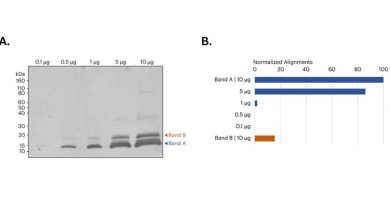Analysis identified new genetic loci linked to dilated cardiomyopathy in U.S. veterans

A genome-wide association study has identified several common genetic loci (genetic locations) associated with dilated cardiomyopathy in U.S. veterans of European and African ancestry, according to preliminary research to be presented at the American Heart Association’s Scientific Sessions 2021.
Dilated cardiomyopathy is a type of heart disease that occurs when the heart’s chambers become enlarged, making it harder to pump blood to the rest of the body. Approximately one-third of people with dilated cardiomyopathy inherit the condition from their biological parents, and the disease is more prevalent among people of African ancestry. Dilated cardiomyopathy worsens over time if untreated.
While the identification of relevant, common genetic variants has recently shown promise, these efforts have been limited by the availability of patients with previously diagnosed dilated cardiomyopathy.
“Numerous rare genetic mutations have been linked to dilated cardiomyopathy, yet the identification of relevant, common genetic variants has been more limited,” said Krishna G. Aragam, M.D., M.S., a cardiologist and researcher at the Massachusetts General Hospital, Harvard Medical School, and the Broad Institute of MIT and Harvard in Boston. “In this analysis, we leveraged data from the National VA Healthcare System to study the association of common genetic variants with dilated cardiomyopathy.”
Aragam and colleagues conducted a retrospective, genome-wide association study using electronic health records from the U.S. Department of Veteran Affairs’ Million Veteran Program, a national research program including more than 825,000 former U.S. military service members since 2011 that is focused on how genes, lifestyle and military exposure may affect health and illness. Medical records through September 30, 2019, for nearly 500,000 participants in the Million Veteran Program were extracted, and the average age was 61 years, and approximately 90% were male.
The authors approximated a dilated cardiomyopathy phenotype through queries of the electronic health record, and identified over 24,000 individuals with the condition, including three-quarters of European ancestry and one-quarter of African ancestry. Genetic analysis identified 29 common genetic loci significantly associated with dilated cardiomyopathy. Notably, the uncovered loci included genes relevant to cells of the heart muscle (cardiomyocytes). The genetic risk scores were able to predict incident dilated cardiomyopathy in another dataset from the UK Biobank. These results provided strong validation of the phenotype of dilated cardiomyopathy.
Dr. Aragam added, “We were encouraged that our phenotypic construct of dilated cardiomyopathy—based predominantly on electronic health records—was supported by more than one line of genetic evidence. Our findings, therefore, highlight the potential for collaborative studies leveraging data from health care system-associated biobanks to investigate common genetic loci associated with dilated cardiomyopathy. Such efforts may rapidly advance our ability to identify the individuals at highest risk of dilated cardiomyopathy in advance, and ultimately improve their prognosis and management.”
Source: Read Full Article



